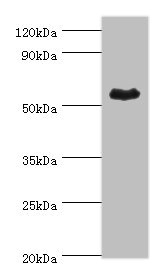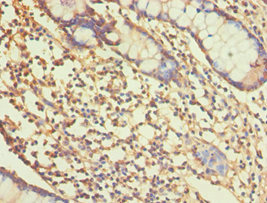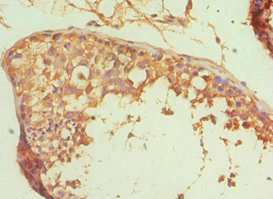Full Product Name
Rabbit anti-Homo sapiens (Human) ALDH1A1 Polyclonal antibody
Alternative Names
Acetaldehyde dehydrogenase 1 antibody; AHD2 antibody; AL1A1_HUMAN antibody; ALDC antibody; Aldehyde dehydrogenase 1 family member A1 antibody; Aldehyde dehydrogenase 1 soluble antibody; Aldehyde dehydrogenase 1A1 antibody; Aldehyde dehydrogenase antibody; Aldehyde dehydrogenase cytosolic antibody; Aldehyde dehydrogenase family 1 member A1 antibody; Aldehyde dehydrogenase liver cytosolic antibody; ALDH 1 antibody; ALDH 1A1 antibody; ALDH class 1 antibody; ALDH; liver cytosolic antibody; ALDH-E1 antibody; ALDH1 A1 antibody; ALDH1 antibody; ALDH11 antibody; ALDH1A1 antibody; ALHDII antibody; cytosolic antibody; epididymis luminal protein 12 antibody; epididymis luminal protein 9 antibody; epididymis secretory sperm binding protein Li 53e antibody; HEL-S-53e antibody; MGC2318 antibody; PUMB1 antibody; RALDH 1 antibody; RalDH1 antibody; Retinal dehydrogenase 1 antibody
Species Reactivity
Human, Mouse
Immunogen
Recombinant Human Retinal dehydrogenase 1 protein (202-501AA)
Immunogen Species
Homo sapiens (Human)
Purification Method
Antigen Affinity Purified
Concentration
It differs from different batches. Please contact us to confirm it.
Buffer
PBS with 0.02% sodium azide, 50% glycerol, pH7.3.
Tested Applications
ELISA, WB, IHC
Recommended Dilution
| Application |
Recommended Dilution |
| WB |
1:500-1:2000 |
| IHC |
1:20-1:200 |
Storage
Upon receipt, store at -20°C or -80°C. Avoid repeated freeze.
Lead Time
Basically, we can dispatch the products out in 1-3 working days after receiving your orders. Delivery time maybe differs from different purchasing way or location, please kindly consult your local distributors for specific delivery time.
Usage
For Research Use Only. Not for use in diagnostic or therapeutic procedures.






